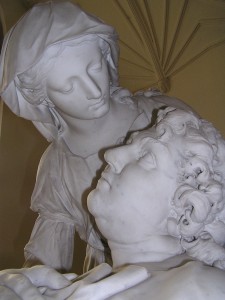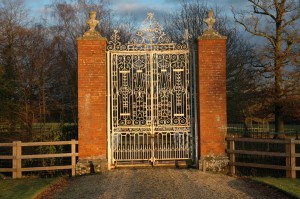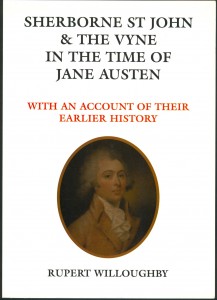(The following is a press release dated January 2008)
HISTORIAN FINDS LOST ARCHITECTURAL TREASURE AT SHERBORNE ST JOHN
Lost work by Sir John Soane, one of England’s most influential architects, may have been rediscovered at Sherborne St John – five miles from its original location.
The discovery has been made by historian Rupert Willoughby at Beaurepaire Park, one of Hampshire’s least-known treasures.
Beaurepaire was the seat, from 1353 to 1873, of the Brocas family, whose land stretched continuously from Burghfield Hill to Basingstoke.
Set in glorious parkland and surrounded by a medieval moat, the remains of the eighteenth-century mansion, wrecked by fire during the Second World War, were beautifully restored in the 1960s.
A prominent feature of the property is its moat-bridge entrance – a pair of elaborate wrought-iron gates supported by tall, brick pillars, each surmounted by the Moor’s-head crest of the Brocas family.
The romantic, often dramatic story of Beaurepaire and the Brocases – including royal visits and a lengthy Civil-War siege when it was defended by the lady of the house – is told by Rupert Willoughby in his book Sherborne St John and the Vyne in the Time of Jane Austen.
It was while researching the book that Mr Willoughby discovered a reference to the construction of the bridge. ‘An old Bramley farmer called William Clift, who was born in 1828, recalls the event in his memoirs. According to Clift, the “large iron gates at the entrance over the moat” were brought from Wokefield Park, on the Brocas estate at Stratfield Mortimer, which had been the family’s favoured residence in the eighteenth century. Clift’s father provided the timber for the bridge. This occurred during his childhood and presumably coincided with the sale of Wokefield in 1839.
‘Soane, the foremost architect of the day and a local boy, brought up in Reading, had worked for Mrs Brocas at Bramley Church. He built the so-called Brocas aisle, completed in 1802, which houses the monument to her late husband.
‘It appeared that the couple had earlier employed him at Wokefield, where he made alterations to the house and designed a new gateway in 1788.’
Mr Willoughby found a drawing for the Wokefield gates in the archives at Sir John Soane’s Museum, in Lincoln’s Inn Fields – the architect’s former home which he left to the nation, along with all its contents – and compared them with those at Beaurepaire.
‘The entrance at Wokefield was much wider, so the iron gates are not the same. The brick posts now at Beaurepaire are, however, identical to those in Soane’s drawing, complete with the Moor’s-head crests. Plaques bearing the Brocas arms of a lion rampant are missing, but they may have been damaged in transit or never even executed. Not all the relevant drawings survive. The likelihood that Soane erected these posts at Wokefield in 1788 and that they were transported to Beaurepaire in 1839 is, however, very strong.’
The records show that Soane made nine journeys to Wokefield in 1788 and charged £650 for his services, a substantial sum. Soane was at the height of his profession. In the same year he was appointed architect to the Bank of England. The building was his masterpiece and its demolition in the 1920s has been described as the twentieth century’s ‘greatest architectural crime in the City of London’.
Rupert Willoughby’s book, Sherborne St John and the Vyne in the Time of Jane Austen, is available at all good stockists, priced at £10.99. Sir John Soane’s Museum in London is open throughout the year and admission is free.


